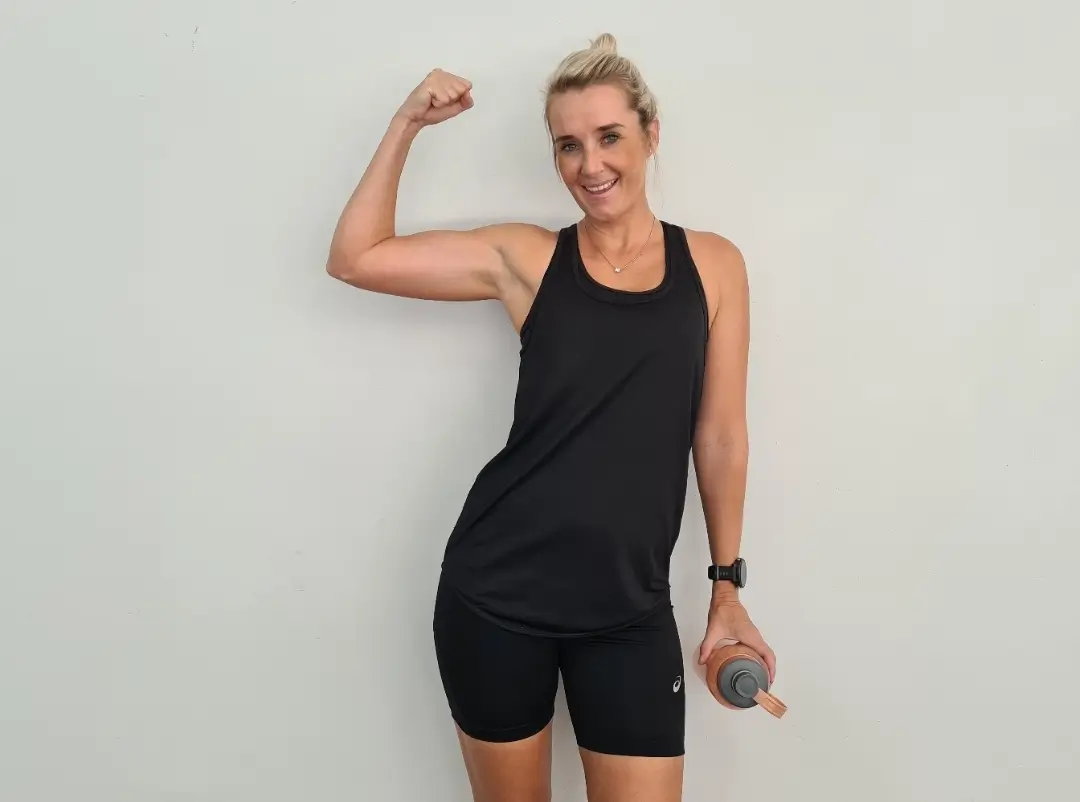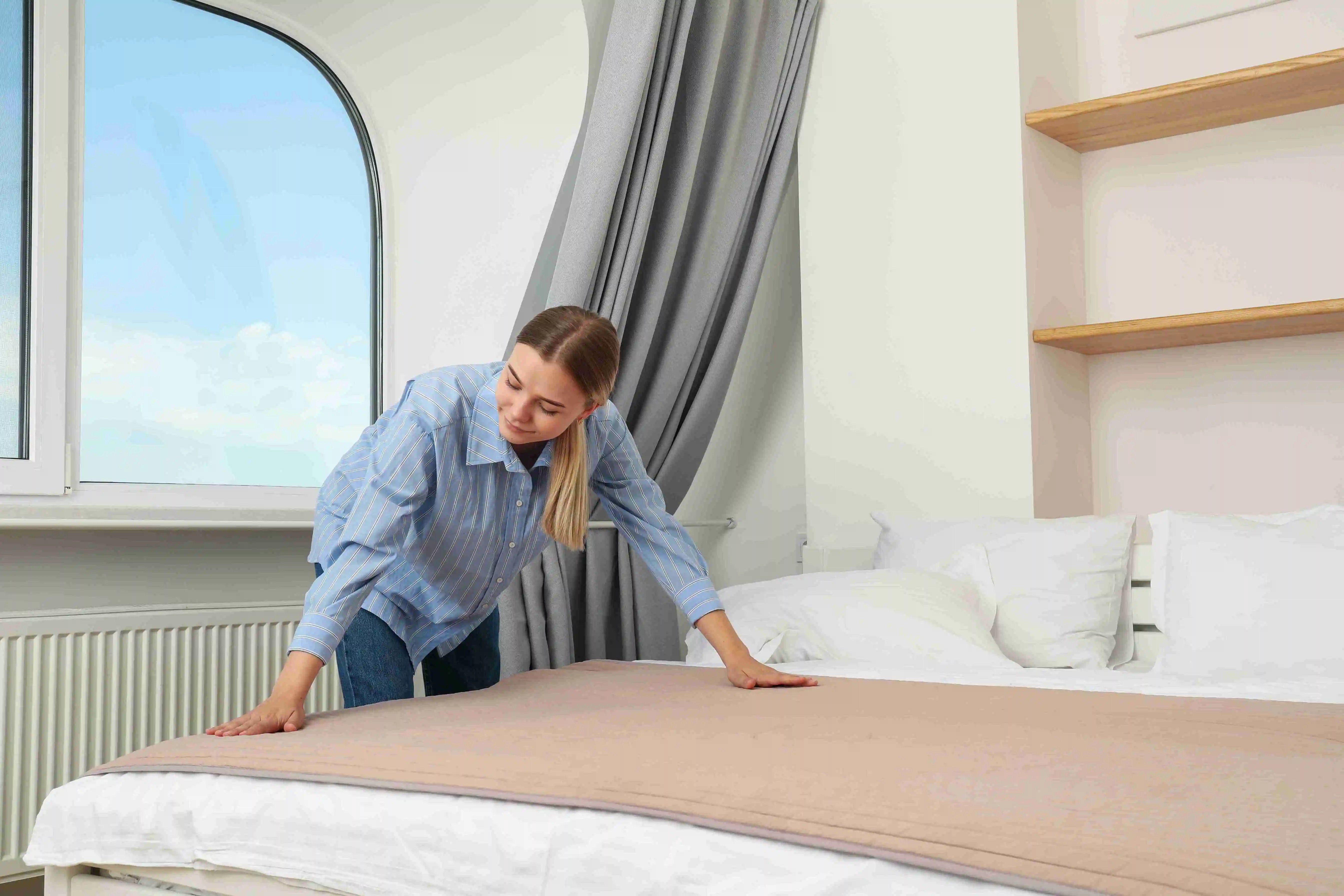When it comes to enhancing the comfort and support of your mattress, mattress toppers play a pivotal role. They come in various types, each offering unique benefits and features.
In this article, we will compare different mattress topper types, exploring their materials, designs, and the sleep experiences they offer. Whether you're seeking extra cushioning, improved pressure relief, or temperature regulation, understanding the differences between mattress topper types can help you make an informed decision to enhance your sleep quality.
What is a mattress topper?
Simply put, a mattress topper gives your existing mattress a boost of comfort and support by adding an extra layer on top. Made from materials like latex, wool, memory foam, or even feathers, these toppers come in various thicknesses to fit your needs.
What Purpose Do Mattress Toppers Serve?
As mattresses age, they may lose some of their cushion or support, leaving you tossing and turning. While a topper won't magically turn back time, it can significantly boost your comfort and buy you precious months before needing a new mattress. Think of it as a cozy upgrade, not a full-blown replacement.
For those with brand-new but slightly firm mattresses, a soft topper can add a delightful layer of plushness. And if you're battling joint pain or arthritis, latex or memory foam toppers offer a soothing haven, reducing strain and bringing sweet relief.
Advantages of Mattress Toppers
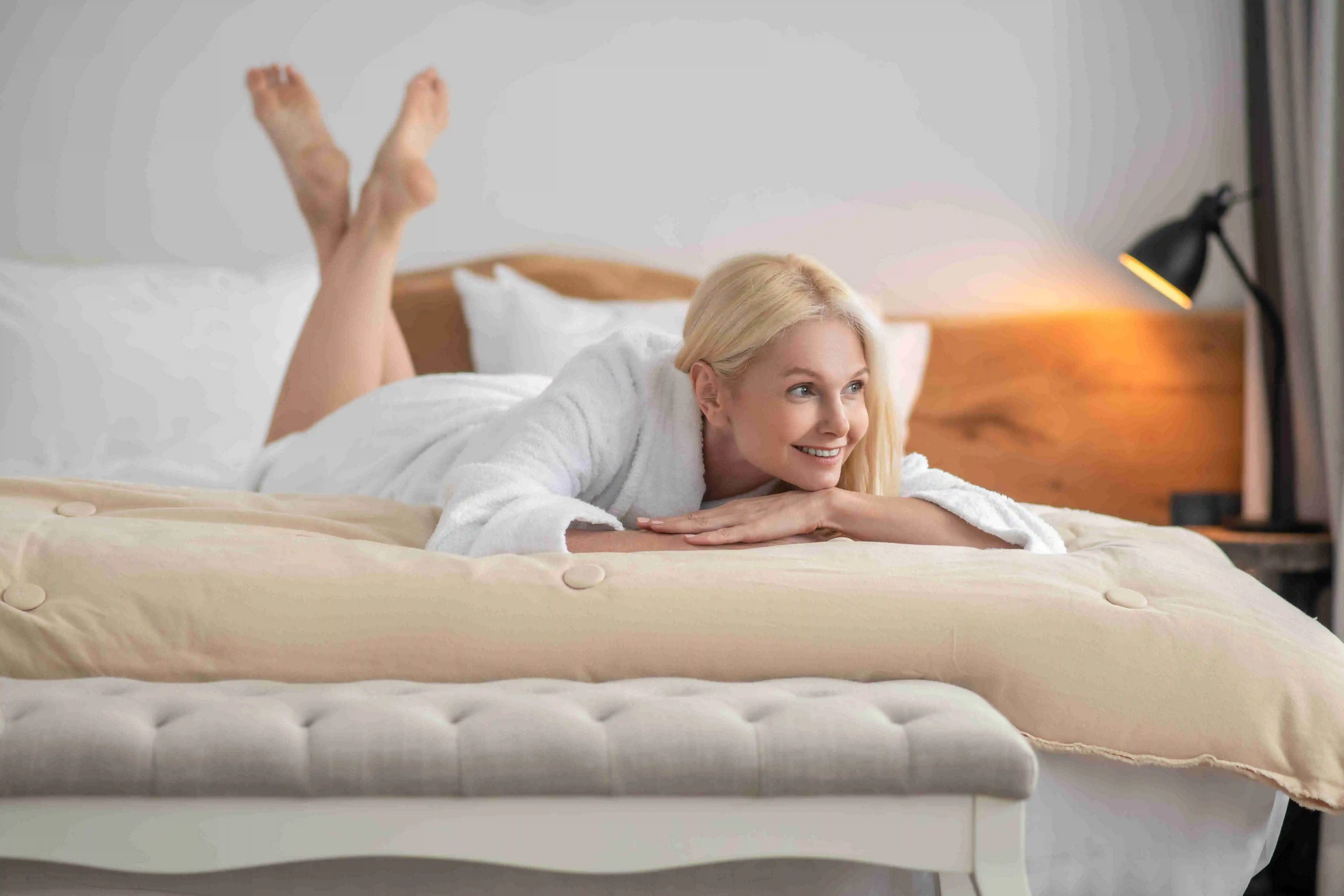
Firmness Modification
A mattress topper can be a game-changer for the feel of your bed. Some toppers specifically designed to add firmness and support are ideal if your mattress is too soft. Conversely, most toppers offer a plush experience, ideal for firm mattresses. Therefore, if you're dissatisfied with your bed's hardness but don't want to invest in a new one, a topper could be an affordable solution.
The thickness of the topper is a crucial factor; if you crave a more supportive feel, opt for a thicker topper. It'll make a bigger difference than a thinner one. On the other hand, if you're after pure cloud-like softness, a thinner topper will do the trick.
Mattress Protection
While mattress protectors and toppers benefit your bed, they're different. Mattress protectors, those thin shields against spills, stains, and dust, focus on safeguarding the surface. Toppers, on the other hand, go beyond just protection. They add a layer of comfort and can even help extend the lifespan of your mattress by preventing wear and tear on the comfort layer's materials.
Stronger Support
As your mattress ages, its comfort layer wears down. This loss of support can lead to an uneven surface, causing aches and pains for the sleeper. To combat this, a firm mattress topper can be your savior.
A firm topper helps maintain your body on a level surface, preventing it from sinking into areas where you carry more weight. This provides much-needed support and can significantly reduce discomfort during sleep.
Cooling
A breathable mattress topper might help you sleep more easily if your mattress' surface tends to retain heat and make you feel overheated during the night. Open-cell foam, vented latex, and natural wool make up the ideal materials for cooling mattress toppers.
Cost-Effective Solution
While new mattresses come with a hefty price tag, especially for larger sizes, mattress toppers offer a significantly more budget-friendly option. Sure, they won't last as long as a brand-new bed, but by extending the life of your current mattress, they can save you hundreds, even thousands, of dollars in the long run. Think of it as an investment without breaking the bank.
Types of Mattress Toppers
Similar to mattresses, there are several kinds of mattress toppers available. Every kind has a unique set of advantages.
Latex
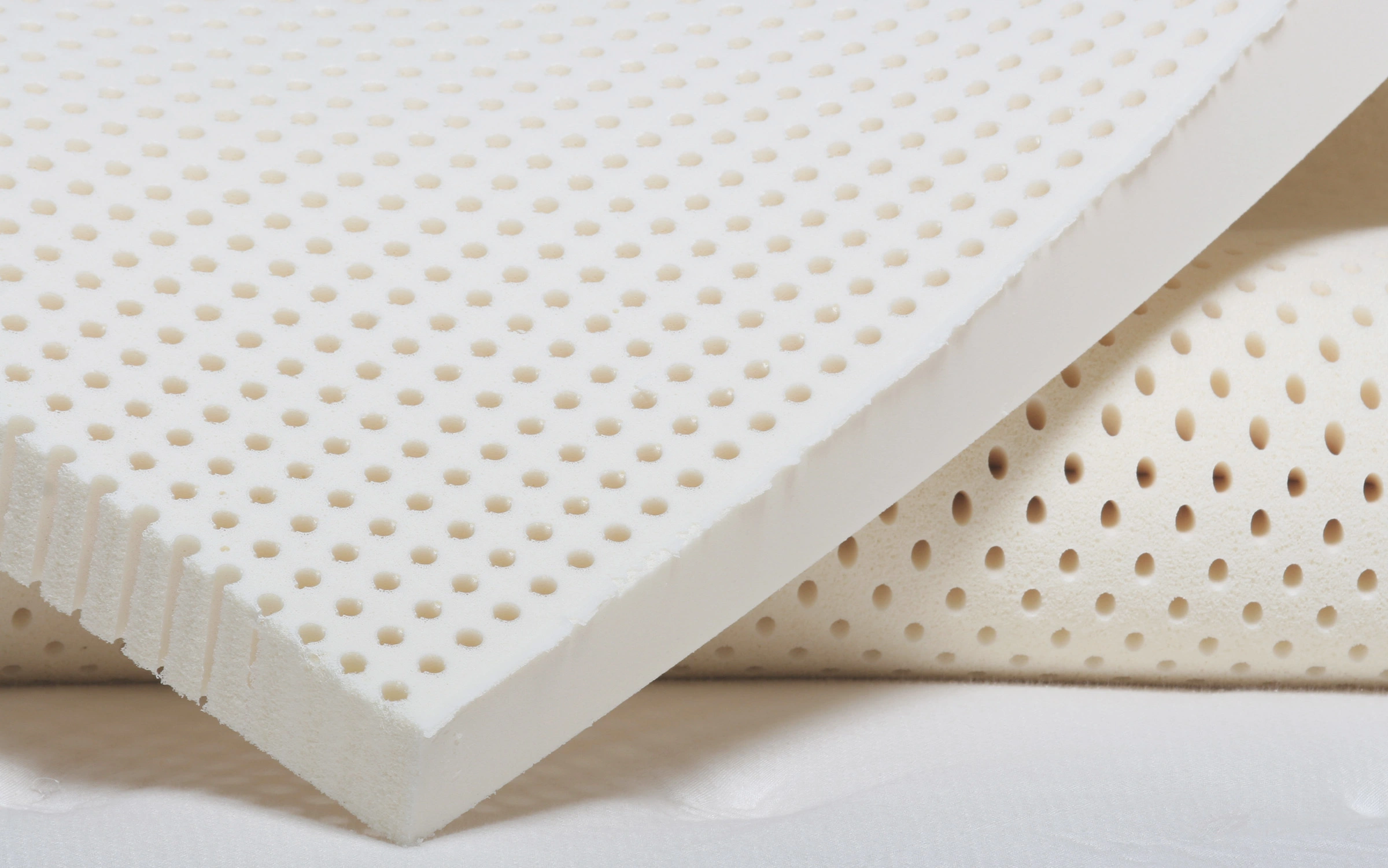
Natural latex, derived from the sap of rubber trees, provides excellent support for a firm sleep surface. However, its stiffness might not suit those seeking plush comfort. And, of course, latex allergies are another reason to consider alternative materials.
Pros:
- It is non-allergic and antimicrobial, unless you have a latex allergy.
- It is generally stiffer than memory foam.
- Excellent support for aching or arthritic joints.
- Natural rubber is quite robust.
- Doesn't transmit motion, so you won't be bothered if your spouse turns and tosses during the night.
Cons:
- The cost of natural latex is high.
- Rubber scent, at least at first.
- Some find latex to be too rigid.
- It has a "bouncy" quality that some individuals find objectionable.
Memory Foam
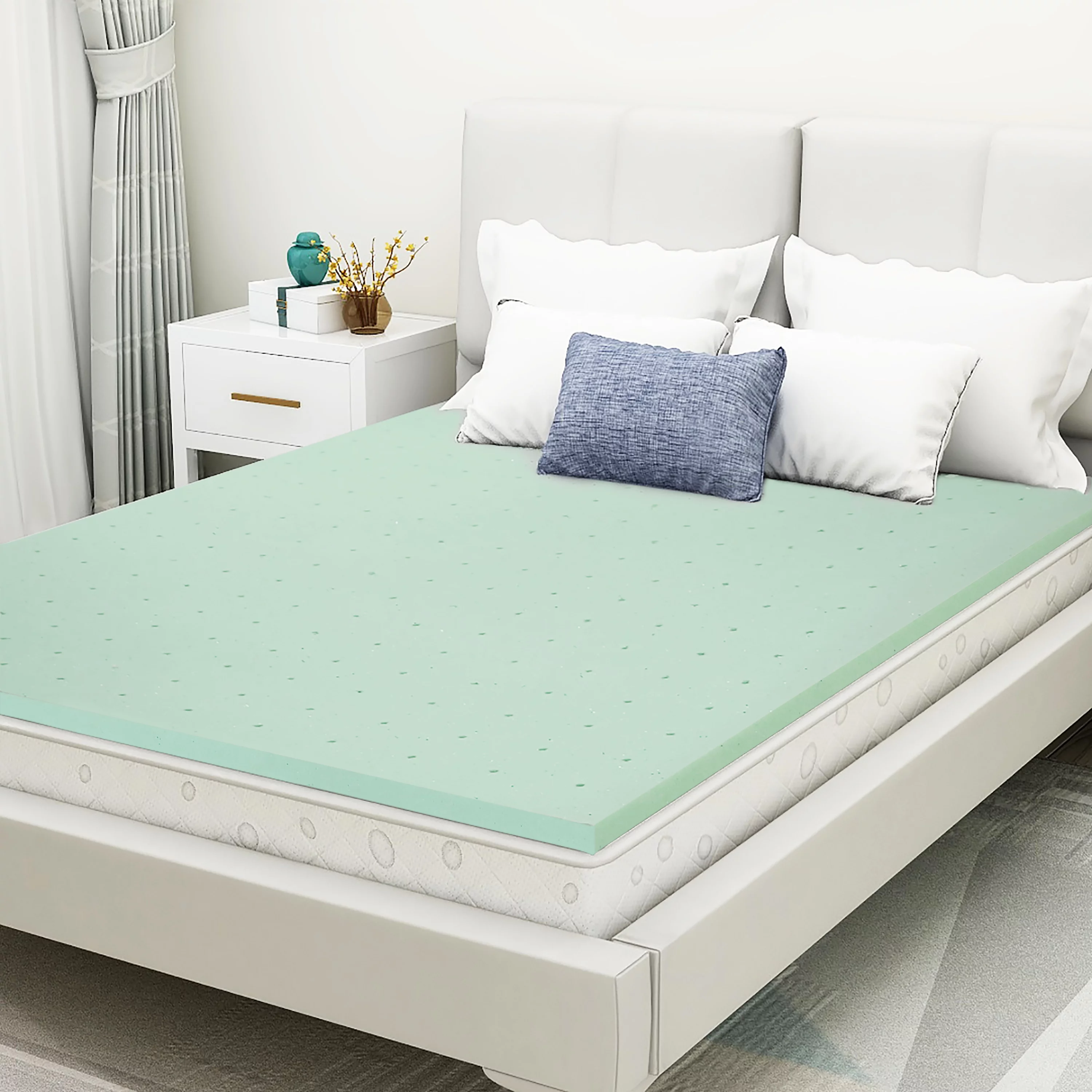
Memory foam, a type of polyurethane with enhanced density, has become a popular choice for mattress toppers. Its superior cushioning and supportive qualities come in a variety of thicknesses and densities, offering personalized comfort for all types of sleepers. No wonder it's found its way into everything from pillows and bathmats to sneakers, making the world a softer place for countless people's feet, floors, and, of course, beds.
Pros:
- Soft and cozy.
- It relieves strain on painful or arthritic joints.
- Enhances the comfort of an old, firm, or unsupportive mattress.
- It minimizes the motion of a tossing, rotating bedfellow.
Cons:
- It may be warm.
- It can make it challenging to move around or roll over in bed.
- It might be a bit costly.
Polyester
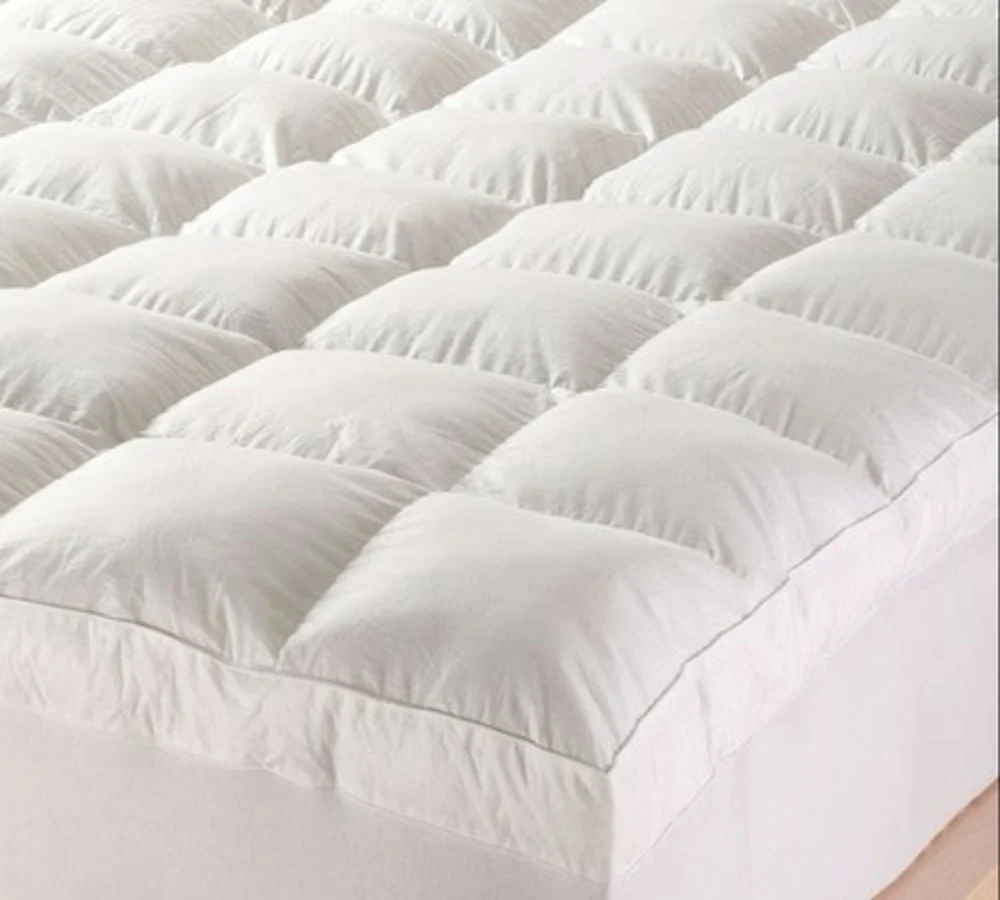
Though budget-friendly and fluffy at first, polyester is the least supportive mattress topper material. It quickly compresses, offering little lasting cushioning or support, making it unsuitable for those seeking significant comfort or pressure relief. However, for individuals who enjoy the feel of feathers but suffer from allergies, polyester blends can be a decent alternative.
Pros:
- Inexpensive.
- No odor.
- Provides softness and coziness.
Cons:
- It may be warm.
- May eventually lump up.
Feathers
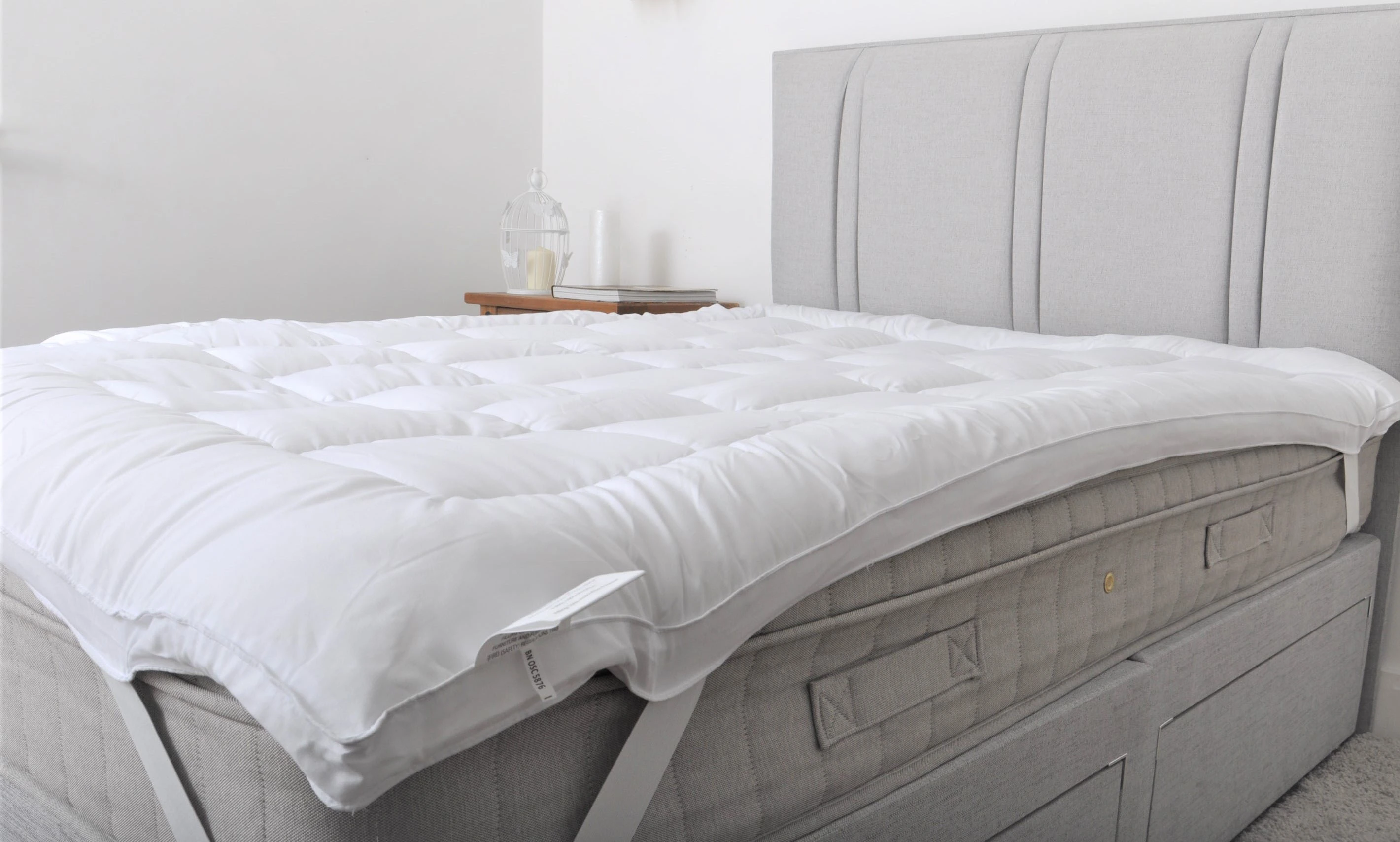
Luxuriously soft, like a duvet filled with fluffy feathers, featherbeds offer undeniable comfort. However, be aware that their plushness comes at the expense of minimal support. Before buying a feather topper, make sure you're not allergic to feathers.
Pros:
- Very Soft.
- Less costly than latex or memory foam.
- Cool and refreshing to the touch.
- Doesn't make it difficult to roll over or move in bed.
Cons:
- Occasionally, it is loud and crinkly.
- Feathers tend to compress over time and occasionally require shaking.
- Elicit allergies in certain individuals.
Wool
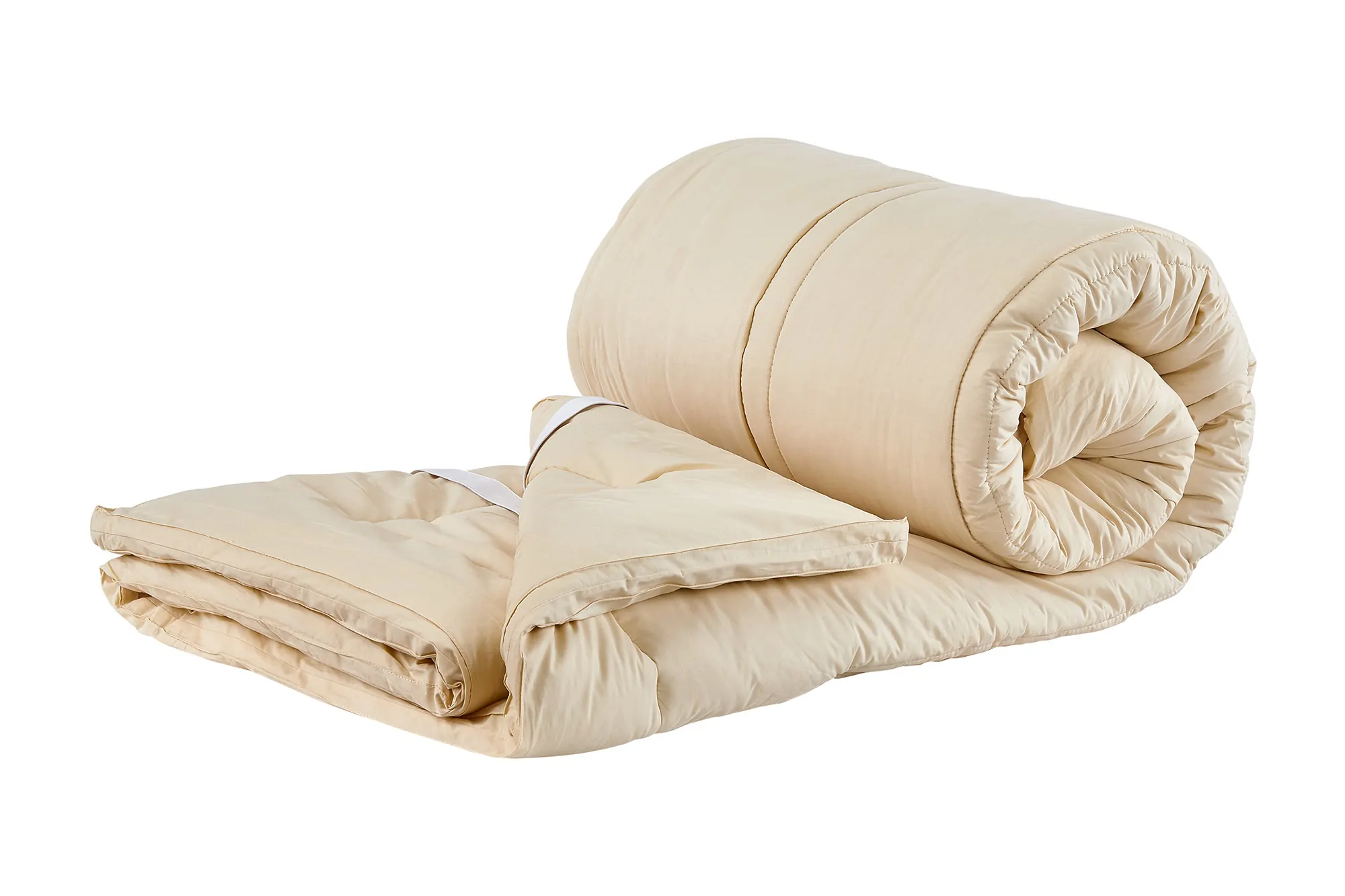
While not widely available, natural wool fleece mattress pads offer a cozy and temperature-regulating option for those seeking extra padding. Keep in mind, these are not toppers, but pads—adding a layer of softness and comfort rather than significant support. Therefore, they may not be the best choice for joint pain or other conditions that require more firmness.
Pros
- Soft and cozy.
- Warm in winter, cool in summer.
- Very robust.
- Naturally antibacterial and hypoallergenic.
Cons:
- Difficult to move around.
- Costly.
Mattress Topper Factors to Consider
- Thermoregulation: Look for a mattress topper that helps regulate body temperature. Wool and certain types of foam are known for their breathability and ability to keep you cool in warm temperatures and warm in cold temperatures.
- Pressure Relief: A good mattress topper should provide pressure relief, especially if you suffer from joint or back pain. Memory foam and latex are popular choices for their ability to contour the body and alleviate pressure points.
- Cover Fabric: The cover fabric of the mattress topper can affect its feel and durability. Consider materials like organic cotton for breathability and softness, or bamboo-derived fabrics for their moisture-wicking properties.
- Topper Size: Ensure the mattress topper fits your mattress properly. It should align with the dimensions of your mattress to prevent any discomfort or shifting during use.
- Budget: Set a budget for your mattress topper purchase. Keep in mind that higher-quality materials and construction may come at a higher price, but investing in a good mattress topper can greatly improve the comfort and longevity of your mattress.
What is the best mattress topper for me?
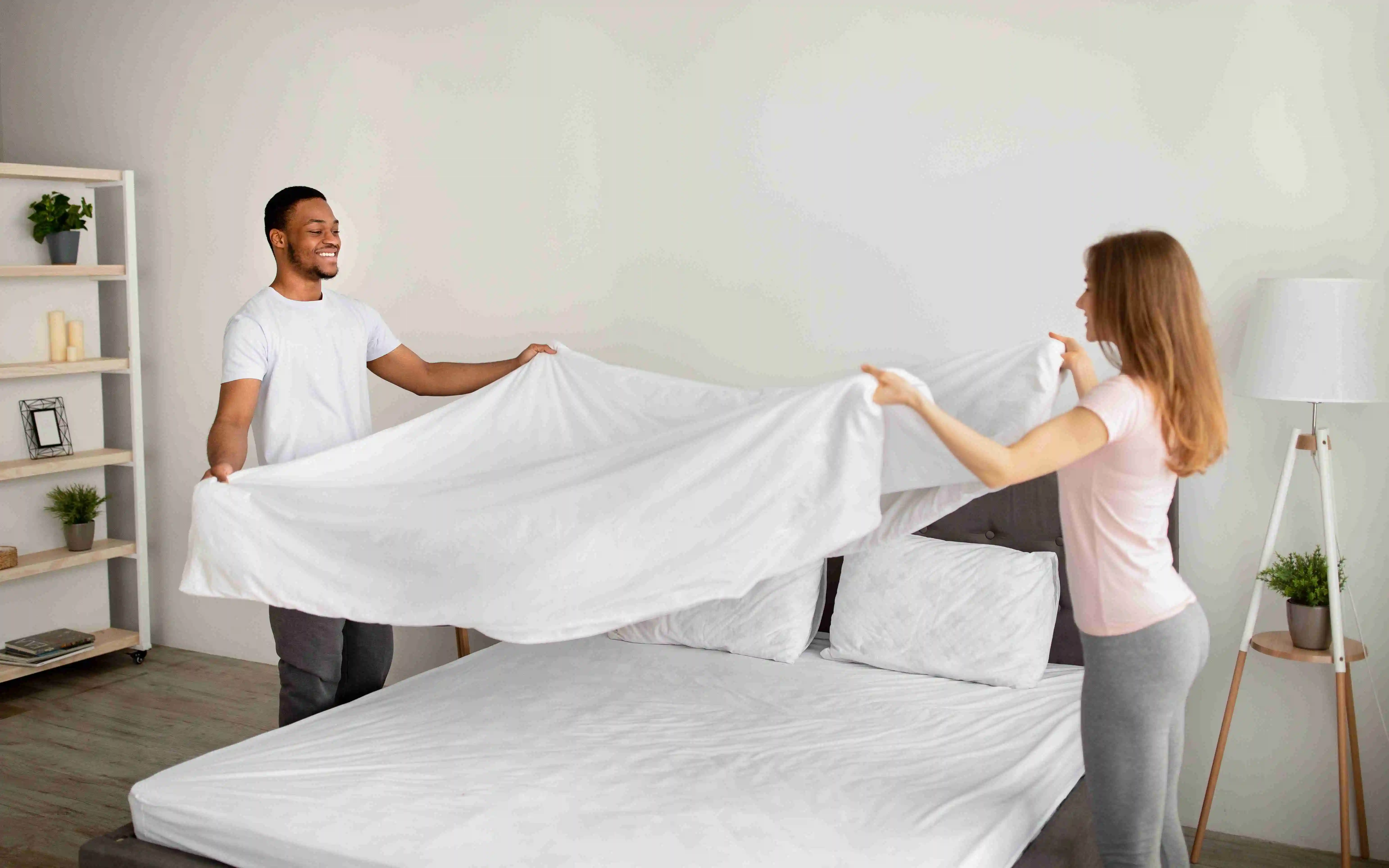
To find out more about selecting the ideal topper for your requirements, browse over the various sleeping positions listed below.
- Side Sleepers: Finding the perfect mattress topper is tough for side sleepers. Soft enough to cradle your curves and relieve shoulder and hip pressure, but not so soft as to misalign your spine. Otherwise, you'll wake up feeling stiff and sore instead of refreshed.
- Stomach Sleepers: Stomach sleepers, more than any other position, need a firm mattress topper for optimal support. Sleeping on your stomach puts extra stress on your lower back, especially without proper cushioning. High-density foam toppers are often the best choice, offering firm support and pressure relief. Moreover, stomach sleepers often press their faces and necks against the mattress, so a topper with cooling properties is a must for a comfortable night's sleep.
- Back Sleepers: If you sleep on your back, you'll need a mattress topper that supports you without drooping, which can cause back pain. To keep your spine in alignment and prevent aches, look for a topper that offers firm, even support from head to toe. Think medium-to-firm with a touch of contouring, ideally made from materials like memory foam that hug your curves just right. Avoid overly soft toppers, as they might not provide the necessary support for your lower back.
FAQs
Should I place mattress toppers over or beneath mattress pads?
For optimal comfort and protection, layer your bedding like this: mattress, mattress cover, then mattress topper. Remember, if your topper is a memory foam topper, it works best directly on the mattress. Adding another layer might negate its conforming abilities.
Are pillow-top mattress toppers beneficial?
Yes, they are beneficial. If your mattress feels lumpy or past its prime, a topper can buy you precious sleep years before a full replacement. They're also game-changers for guest rooms with uncomfortable futons or fold-out sofas.
Is it possible to stack two mattress toppers on top of one another?
While tempting, stacking toppers is unlikely to provide the support you need for a good night's sleep. Instead, consider investing in a thicker single-topper or even a new mattress.
What thickness is ideal for a bed topper?
Toppers come in thicknesses ranging from 2 to 6 inches (5 cm to 15 cm). Choose based on your needs and weight: heavier sleepers or those seeking significant change may benefit from a thicker option.
For back discomfort, what kind of bed topper is best?
A cooling memory foam mattress topper is an excellent way to take care of your back, as it relieves pressure in the most important places. However, remember, a firm mattress underneath is crucial for optimal support.
What types of mattress toppers are out there?
There are lots of bed toppers on the market, such as memory foam mattress pads, viscosoft mattress toppers, soft mattress toppers, pillow top mattress toppers, cooling mattress toppers, and gel memory foam.
Conclusion
When it comes to choosing a mattress topper, there are several types to consider, each with its own unique benefits. From the plush comfort of a foam mattress pad to the natural support of latex and the cooling properties of gel-infused toppers, there is a wide range of options to cater to different sleep needs and preferences.
It's essential to assess individual requirements such as support, temperature regulation, and allergy considerations when selecting the ideal mattress topper.
Karen Barnard
Karen is a Human Movement Science expert and a certified sports nutrition and massage therapist. At Sleepiverse, she combines her passion for human movement science and sleep health to educate herself and her readers about healthier sleep. In addition to writing articles, Karen manages a fitness studio offering private training, athletic conditioning, and sports massage therapy. She focuses on providing people with a holistic environment for people to reach their health goals, often incorporating stretch therapy to promote mental tranquillity and help people improve their sleep.
